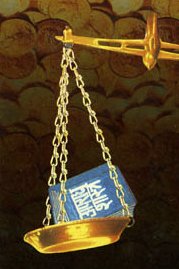Sarvadhikari, Sarvādhikārī: 6 definitions
Introduction:
Sarvadhikari means something in Hinduism, Sanskrit, the history of ancient India, Marathi, Hindi. If you want to know the exact meaning, history, etymology or English translation of this term then check out the descriptions on this page. Add your comment or reference to a book if you want to contribute to this summary article.
In Hinduism
Arthashastra (politics and welfare)
Source: Shodhganga: Kakati Ganapatideva and his times (artha)Sarvādhikāri (सर्वाधिकारि) or Sarvādhikārin refers to an officer in charge of the entire administration. Generally the sarvādhikāri is mentioned in connection with monetary transactions such as the gifts of lands to the temples etc.

Arthashastra (अर्थशास्त्र, arthaśāstra) literature concerns itself with the teachings (shastra) of economic prosperity (artha) statecraft, politics and military tactics. The term arthashastra refers to both the name of these scientific teachings, as well as the name of a Sanskrit work included in such literature. This book was written (3rd century BCE) by by Kautilya, who flourished in the 4th century BCE.
India history and geography
Source: What is India: Inscriptions of the ŚilāhārasSarvādhikārī (chief minister) was a title used in the administration during the rule of the Śilāhāra dynasty (r. 765-1215 A.D.).—The mahāpradhāna was called sarvādhikārī in one record. The king appointed Counsellors (mantrins) and Ministers (mahāmātyas), for example, the mahāpradhāna, for the various departments. Their names together with their official designations occur in several records of the Northern Śilāhāras and prove useful in chronological discussions. In North Koṅkaṇ the ministers were generally five in number.

The history of India traces the identification of countries, villages, towns and other regions of India, as well as mythology, zoology, royal dynasties, rulers, tribes, local festivities and traditions and regional languages. Ancient India enjoyed religious freedom and encourages the path of Dharma, a concept common to Buddhism, Hinduism, and Jainism.
Languages of India and abroad
Marathi-English dictionary
Source: DDSA: The Molesworth Marathi and English Dictionarysarvādhikārī (सर्वाधिकारी).—a (S) That superintends all: also that has charge of all.
Marathi is an Indo-European language having over 70 million native speakers people in (predominantly) Maharashtra India. Marathi, like many other Indo-Aryan languages, evolved from early forms of Prakrit, which itself is a subset of Sanskrit, one of the most ancient languages of the world.
Hindi dictionary
Source: DDSA: A practical Hindi-English dictionarySarvādhikārī (सर्वाधिकारी):—(a) plenipotentiary, wielding or vested with all rights.
...
Kannada-English dictionary
Source: Alar: Kannada-English corpusSarvādhikāri (ಸರ್ವಾಧಿಕಾರಿ):—
1) [noun] (masc.) a ruler with absolute power and authority, esp. one who exercises it tyrannically; a dictator; a tyrant.
2) [noun] a man who orders others about domineeringly or one whose pronouncements on some subject are meant to be taken as the final word; a dictator.
3) [noun] the senior most officer in a palace, temple or religious maṭha (monastery).
Kannada is a Dravidian language (as opposed to the Indo-European language family) mainly spoken in the southwestern region of India.
Nepali dictionary
Source: unoes: Nepali-English DictionarySarvādhikārī (सर्वाधिकारी):—n. a person having all rights; an authoritative person;
Nepali is the primary language of the Nepalese people counting almost 20 million native speakers. The country of Nepal is situated in the Himalaya mountain range to the north of India.
See also (Relevant definitions)
Starts with: Sarvadhikarika, Sarvadhikarin.
Query error!
Full-text: Sarvadhikarin, Mahapradhana, Sunkadhikari, Pradhanacarya, Acarya.
Relevant text
Search found 5 books and stories containing Sarvadhikari, Sarvādhikārī, Sarvādhikāri; (plurals include: Sarvadhikaris, Sarvādhikārīs, Sarvādhikāris). You can also click to the full overview containing English textual excerpts. Below are direct links for the most relevant articles:
The history of Andhra country (1000 AD - 1500 AD) (by Yashoda Devi)
Part 4 - Singaladeva (A.D. 1247-1253) < [Chapter XIV - The Yadavas]
Part 4 - Ambadeva A.D. (1273-1335) < [Chapter XIX - The Kayasthas (A.D. 1220-1320)]
Sir Mocherla Ramachandra Rao < [January 1949]
H. H. Sri Chandrasekharendra Saraswati < [April – June, 1993]
Reviews < [September-October 1933]
Sanskrit sources of Kerala history (by Suma Parappattoli)
8. The Visakhavijaya by Kerala Kalidasa < [Chapter 3 - Historical Details from Mahakavyas]
Shishupala-vadha (Study) (by Shila Chakraborty)
Date of the poet Māgha < [Introduction]
Preceptors of Advaita (by T. M. P. Mahadevan)